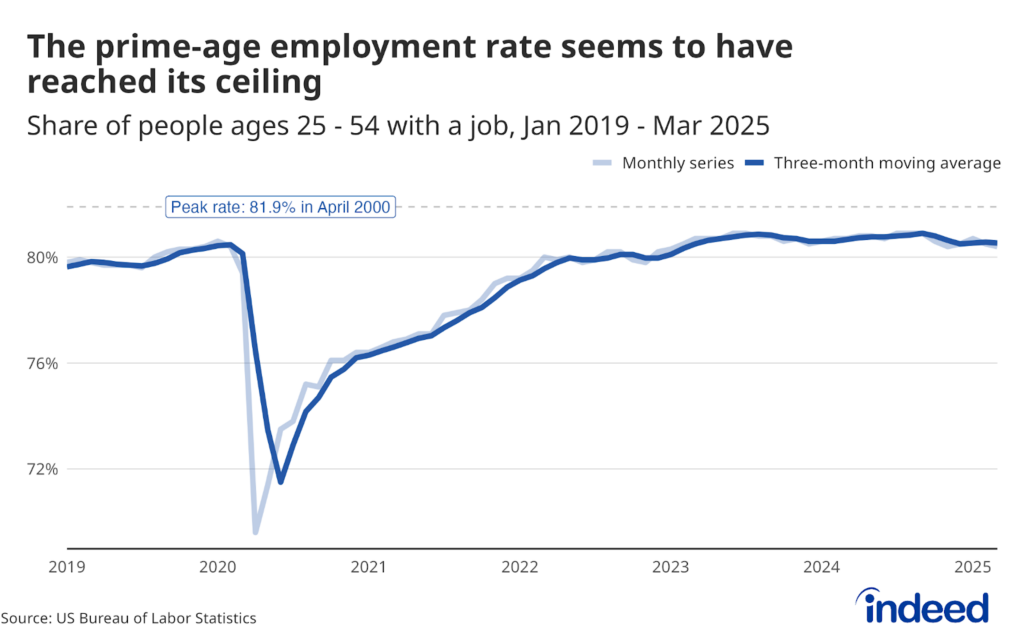Key Points
- Part-time workers typically earn less per hour than full-time workers in the same occupation.
- The part-time penalty hits women particularly hard because they represent a disproportionate share of part-time workers.
- Mothers, who may need flexible working hours, are less likely to work in occupations in which the penalty for working part-time is large.
- Job seekers needing flexibility should consider positions where hours are easily swapped with coworkers, jobs that tend to have lower part-time wage penalties.
Reduced hours are essential for many working parents. But switching to part-time work may hurt earnings. It’s not only the reduction in hours—part-time workers are often paid less per hour than full-time workers in the same occupation. That means that working parents who reduce their hours take a double hit—both from fewer hours worked and from lower hourly pay. Unfortunately, since mothers are more likely than fathers to take jobs with flexible working hours, women tend to be hit more often by this penalty.
Indeed Hiring Lab investigated which occupations have the biggest and which have the smallest penalties for working fewer than 35 hours per week. We found that mothers are more likely to work in occupations in which the penalty for working part-time is smaller. These jobs may be a good option for job seekers who don’t want to be dinged for shorter work hours.
The pay penalty for working part-time varies by occupation
Some jobs penalize part-time work more than others. To see where penalization of part-time work happens most, we looked at the gap between the hourly wage of part-time workers and full-time workers in each occupation after accounting for other factors that influence pay, like age, education level, gender, and industry.
Of course, there are qualities employers want in workers that these measures can’t capture, such as skill at sales. And, in fact, sales jobs are strongly represented among the occupations with the largest part-time penalties. These jobs tend to reward workers for developing personal relationships with customers and always being on call, or for working long hours. Such hard-to-measure factors may be driving some of the differences in the size of the part-time penalty.

On the other hand, in some occupations—registered nurse, for example—part-time workers actually make slightly more than full-time workers. In some cases, the wage penalty for part-time work may be less in jobs in which workers can easily swap hours or shifts with colleagues. The team-based nature of many healthcare jobs makes it easier for workers to have flexible hours. An individual nurse isn’t fully responsible for the care of a patient, but shares responsibility with other staff members. Waiter and waitress jobs also offer opportunities to trade shifts.
Jobs where there is a premium on working part-time might also reflect a selection of more skilled workers into part-time work. For example, more talented hairstylists could work part-time because they can charge more for their work and thus make a reasonable income with fewer hours.

Moms tend to avoid occupations with large part-time pay penalties
We often hear how mothers take a hit to earnings because of the need to balance work and family. But mothers tend to choose jobs that minimize the part-time penalty: the share of mothers is greater in occupations in which the part-time pay penalty is smaller. Occupations like medical assistant, registered nurse, and hairdresser have large shares of mothers and relatively low—or no—wage penalty for working part-time. On the flip side, construction manager, engineering technician, and police officer all have higher part-time penalties and relatively low shares of mothers.

Of course, mothers aren’t the only workers who want fewer hours without a cut in hourly wage. Recent research has found that occupations in which workers are expected to work longer hours have higher average wages. Job seekers who want fewer hours may be deterred from entering those occupations and miss out on higher wages. Job seekers who fit this bill should be on the lookout for positions in which hours are easily swapped or substituted—like registered nurse, cosmetologist, and special education teacher. Their wages will take less of a hit in these jobs.
Methodology
This analysis used data from the 2013 through 2017 American Community Survey. We only looked at civilian non-agricultural occupations that had at least 1,000 observations of men, 1,000 observations of women, and 5,000 total observations over the combined sample period. Workers were only included if they reported working at least 50 weeks per year. We defined mothers as women with children under 18 at home.
We considered part-time as working less than 35 hours per week. The part-time wage penalty was calculated by regressing the natural log of hourly wage on dummy variables for gender, working part-time, having a college degree, a high school degree, some college education, industry of employment, and age group (16 to 24; 25 to 34; 35 to 44; 45 to 54; 55 to 64; or 65 and above) for each occupation. We defined the part-time hourly wage penalty as the coefficient on the dummy variable for working part-time.
The relationship between the employment share of mothers and the part-time wage penalty was determined by regressing the part-time wage penalty on the employment share of mothers. The coefficient was both positive and statistically significant. We found this wasn’t the case when more women who were not mothers worked in an occupation.






